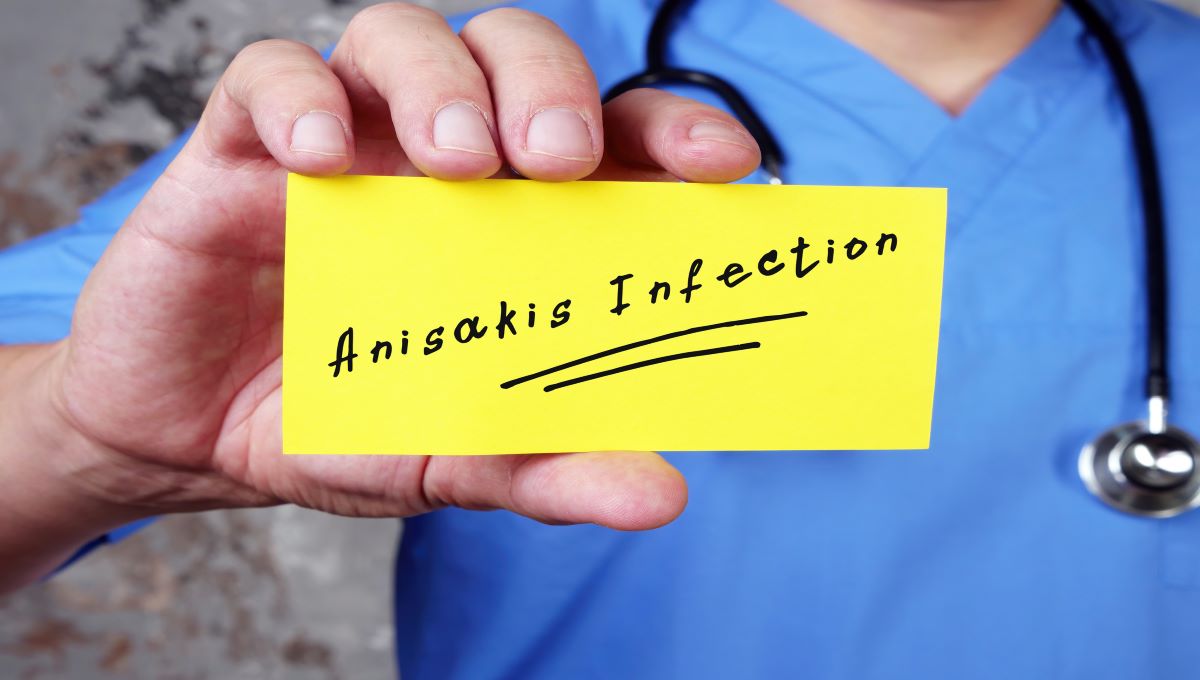
Researchers have found Anisakis larvae in tested samples of fish in Slovakia and called on authorities to step up monitoring of marine parasites.
Scientists revealed extensive infection of fish products with Anisakis larvae and seropositive cases in a group of volunteers regularly eating fish products.
Anisakiasis is a parasitic disease caused by anisakid worms. Transmission occurs when infective larvae are ingested from fish that are eaten raw or undercooked. Measures to control it include freezing or cooking and screening during processing, where individual worms can be removed, or heavily infected material rejected.
Surveillance of diseases caused by marine parasites by health agencies in landlocked countries is lacking. However, global trade and the increasing popularity of raw fish consumption have contributed to the emergence of such diseases, according to a study published in the journal Emerging Infectious Diseases.
Call for enhanced monitoring
Researchers examined 100 frozen Atlantic herring provided by a fish product supplier and 18 packages of ready-to-eat pickled herring from local supermarkets. They found 4,163 larvae in frozen Atlantic herring at an intensity of infection of 2 to 368 larvae per fish. Most larvae were in the abdominal cavity but some were in the muscles.
Although all larvae were dead, even dead parasites or their residues in contaminated fish products can cause allergic reaction in sensitized people, said scientists.
The team also found anisakid worms in a third of ready-to-eat pickled herring at a rate of one to nine larvae per fish.
To test sensitization to Anisakis in people, human serum was collected in 2020 from 91 volunteers who regularly ate fish products. Sensitization was detected in two samples. The positive patients, both women, had no clinical symptoms but had experienced allergy symptoms on several occasions in the past.
“Monitoring fish products intended for human consumption for parasites currently receives insufficient attention. Although all parasites we found were dead, frequent presence of Anisakis spp. in herring poses a potential risk to sensitive persons who might suffer a hyperallergic reaction. In addition, some Anisakis larvae can survive freezing, so risk of infection remains even in fish products frozen for a short time,” said researchers.
Symptoms of anisakiasis are abdominal pain, nausea, vomiting, abdominal distention, diarrhea, blood and mucus in stool, and mild fever. Allergic reactions with a rash and itching, and anaphylaxis, can also occur. Treatment may require removal of the worm by surgery.
UK developments and method accreditation
Meanwhile, the UK National Reference Laboratory for Anisakis at the Centre for Environment Fisheries and Aquaculture Science (Cefas) has looked at the peer-reviewed literature on the topic in 2022 and 2023.
The work is done to maintain awareness of new developments. Some reports showed the level of infestation in various fish species caught in different fishing zones around Europe.
An analysis of the EU’s Rapid Alert System for Food and Feed (RASFF) portal revealed 25 notifications for Anisakis between March 2022 and March 2023. Italy and Spain were the top reporters, and Spanish products were the most affected. One paper referenced illness due to Anisakis. Investigations did not find the parasite but the patient reported frequently eating raw sushi at restaurants.
Cefas officials also attended a training workshop organized by the Institute of Marine Research (IMR) in Norway.
The Food Standards Agency asked Cefas to progress accreditation of its UV-press method to the ISO 17025 standard to meet the requirement for NRLs to only use accredited methods. The method has been in place at Cefas for years but only very limited testing had been undertaken and accreditation had not been a requirement.
The method involves pressing the material to about 2 millimeter thickness, freezing it to kill the larvae, and then viewing the sample under UV light. Anisakis nematodes fluoresce after death under UV light and are counted by the analyst.
There are no official laboratories in Europe designated for Anisakis testing and accredited to ISO 17025 for testing by either the digestion or the UV press method, according to Cefas.
The workshop familiarized participants with the UV press method. The IMR uses this method on a large volume of samples each year. The IMR is training more technicians in the procedure since it already has most of the correct equipment but it is likely to take at least two years before they can apply for accreditation for the UV press method.
(To sign up for a free subscription to Food Safety News, click here.)
